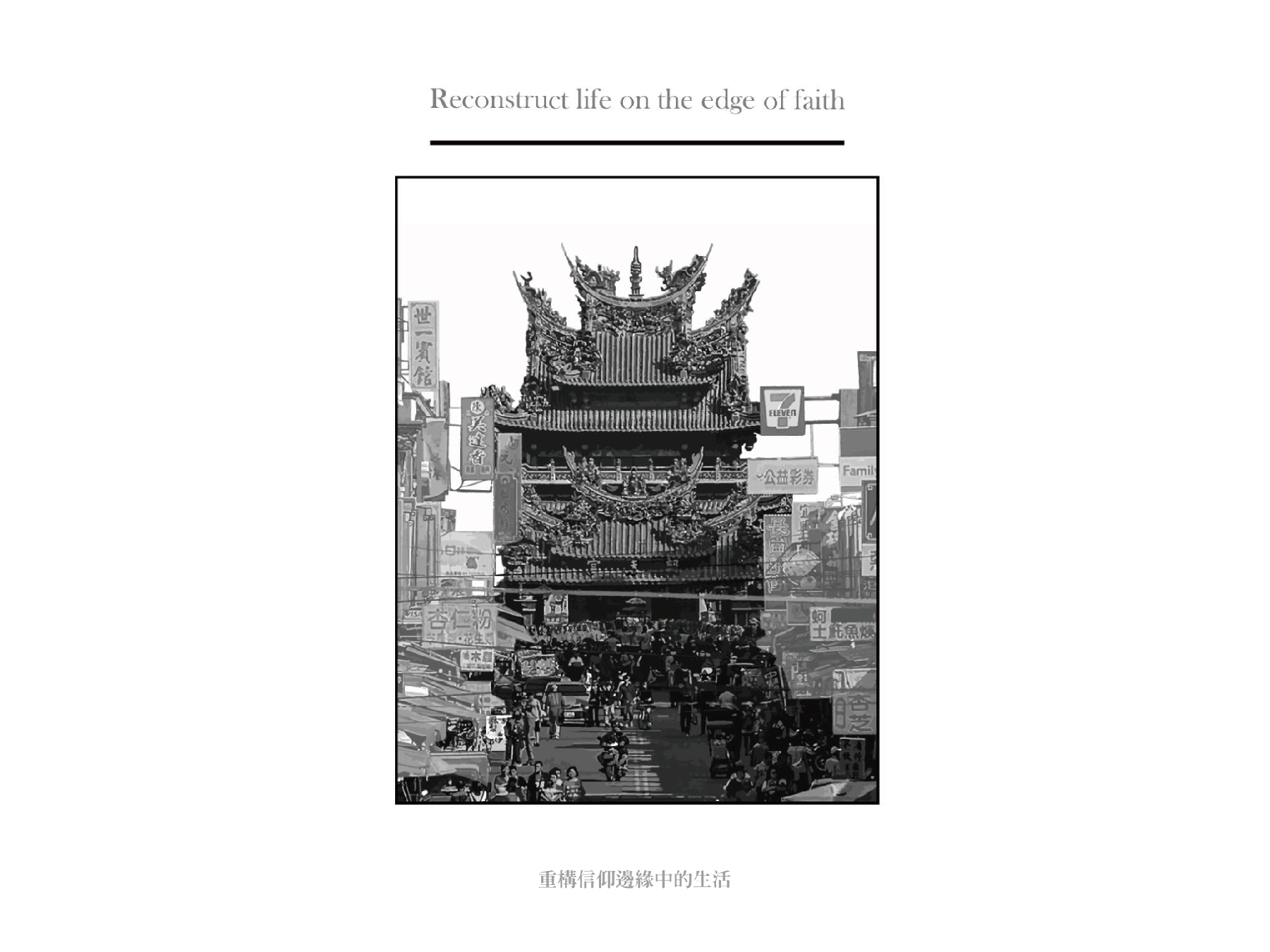邊緣空間
從人的行為中可以發現我們非常依賴空間中的邊緣再過著生活,不管是家中的生活空間或是都市的街道空間都是我們生活中重要的一部份,因為有這些邊界的存在才創造出有趣的生活,如今我們無感邊緣的生活尺度或是包覆、佔據、豎立邊界,這也使我們遠離了熟悉的日常空間,以致現在都生活在被牆所包覆的盒子中與之相望。
廟
廟是台灣重要的生活空間,過往聚落會建廟形成在地中心。廟過去不只是信仰更是人們社交場所,如今隨著都市正面臨轉變及更新再加上現代生活早已轉變,人與廟的關係不再像過去緊密。面對人與廟逐漸分離的現代時空中可以用怎樣的方式讓人願意再次接觸熟悉的廟邊緣產生連結,這是我想探討這議題,找回即將失去的廟宇生活感。
手法
在設計中藉由打開廟的側牆來達到橫向空間延續的效果,讓都市與廟得以被串起來體驗,而在垂直的軸向我依然保留廟的參拜路線,以保留舊的結構、鋪面、神的位置等…讓民眾在進入空間中可以感受原有秩序與氛圍。藉由高層轉變來呼應主次神關係,也用以拉長民眾在體驗空間時的時間,使得更能感受在地空間活力。最後希望不同使用者可以有一個機會去重新體驗廟文化或是在地生活,讓民眾重新認識新莊廟街不管是文化或是地域都能更了解土地的溫度。
From human behavior, we can find that we rely on the edge of space to live, whether it is the living space at home or urban street space is an important part of our life, because the existence of these boundaries to create an interesting life, now we feelless edge of life scale or cover, occupy, erect boundaries, which also keep us away from the familiar daily space, so that now live in the wall covered box to look at it.
Temples are an important space in Taiwan, and in the past they were built in the center of the city. Temples used to be more than just faiths but also social places, but now, as cities are changing and updating and modern life has long changed, the relationship between people and temples is no longer as close as it used to be. Facing the modern time and space of the gradual separation of man from the temple can make people willing to contact the familiar temple edge again to create a connection, this is I want to explore this topic, to find the soon-to-be-lost sense of temple life.
In the design by opening the temple’s wall to achieve the effect of horizontal space continuation, so that the city and the temple can be stringed together to experience, while in the vertical axis still retain the temple’s worship route, in order to preserve the old structure, paving, God’s position… Let the people in the space can feel the original order and atmosphere. By the floor transformation to Response the relationship between the God, but also to lengthen the time of the people in the experience of space, so that more feel the vitality of space in the temple.





